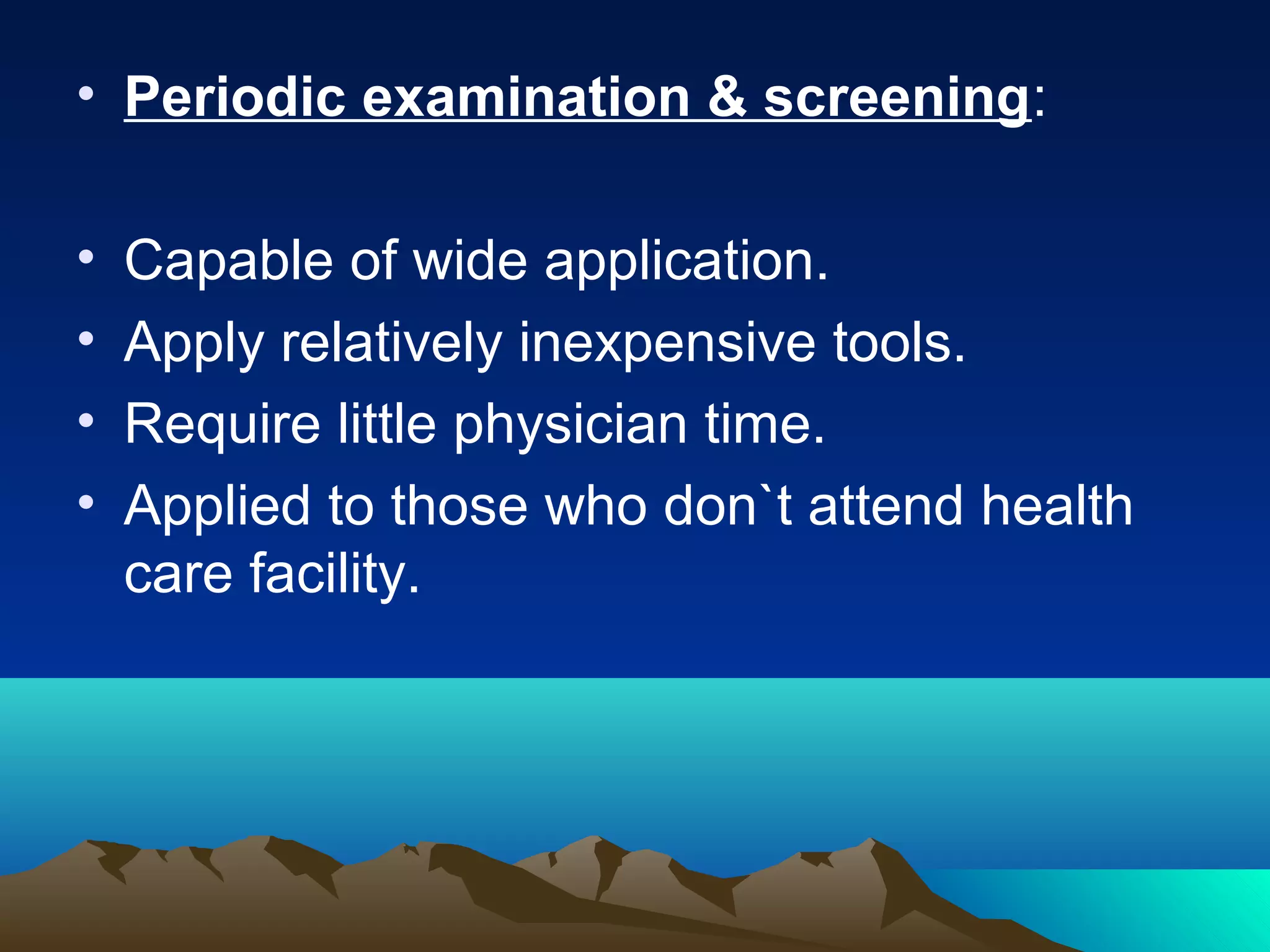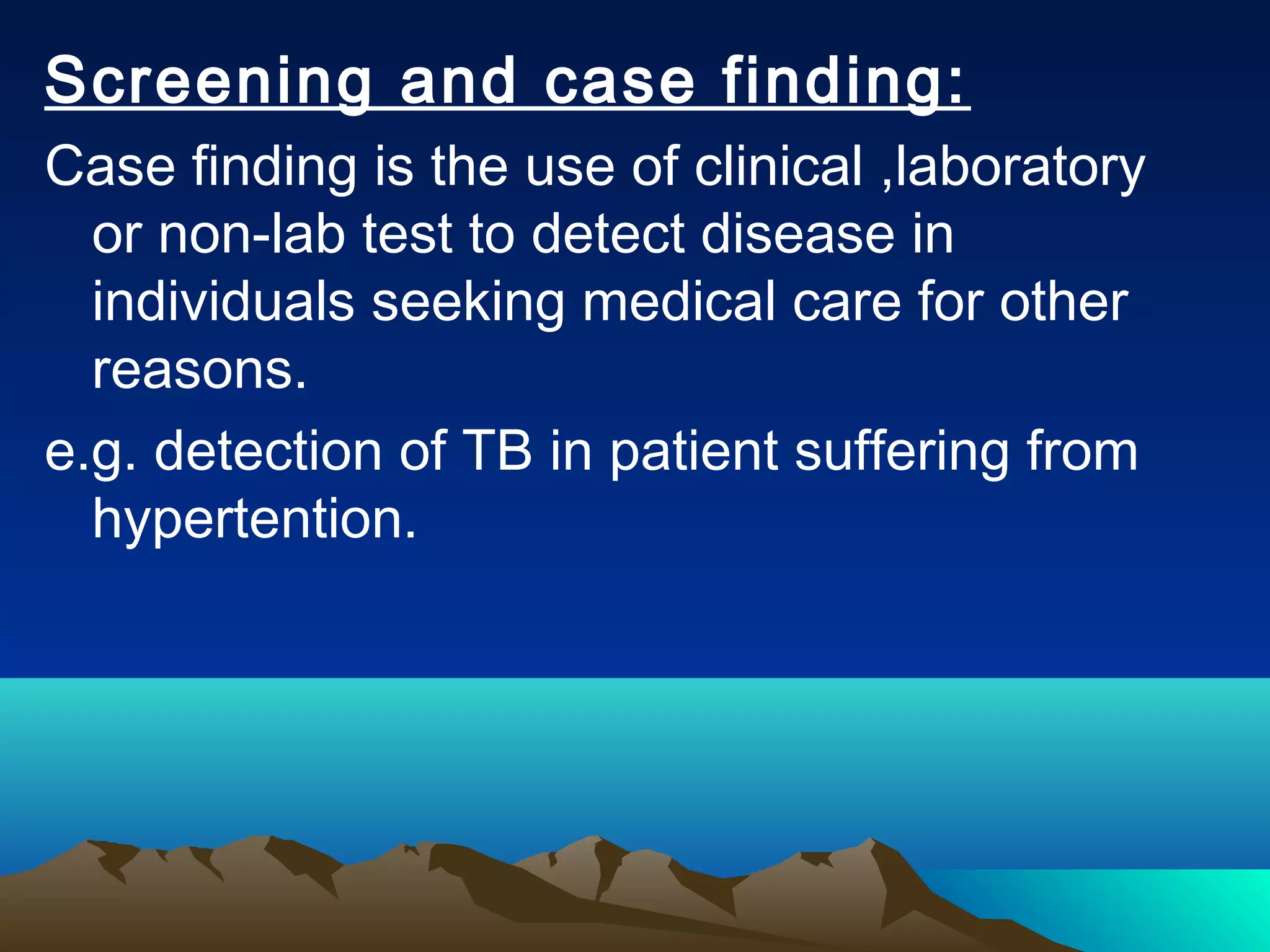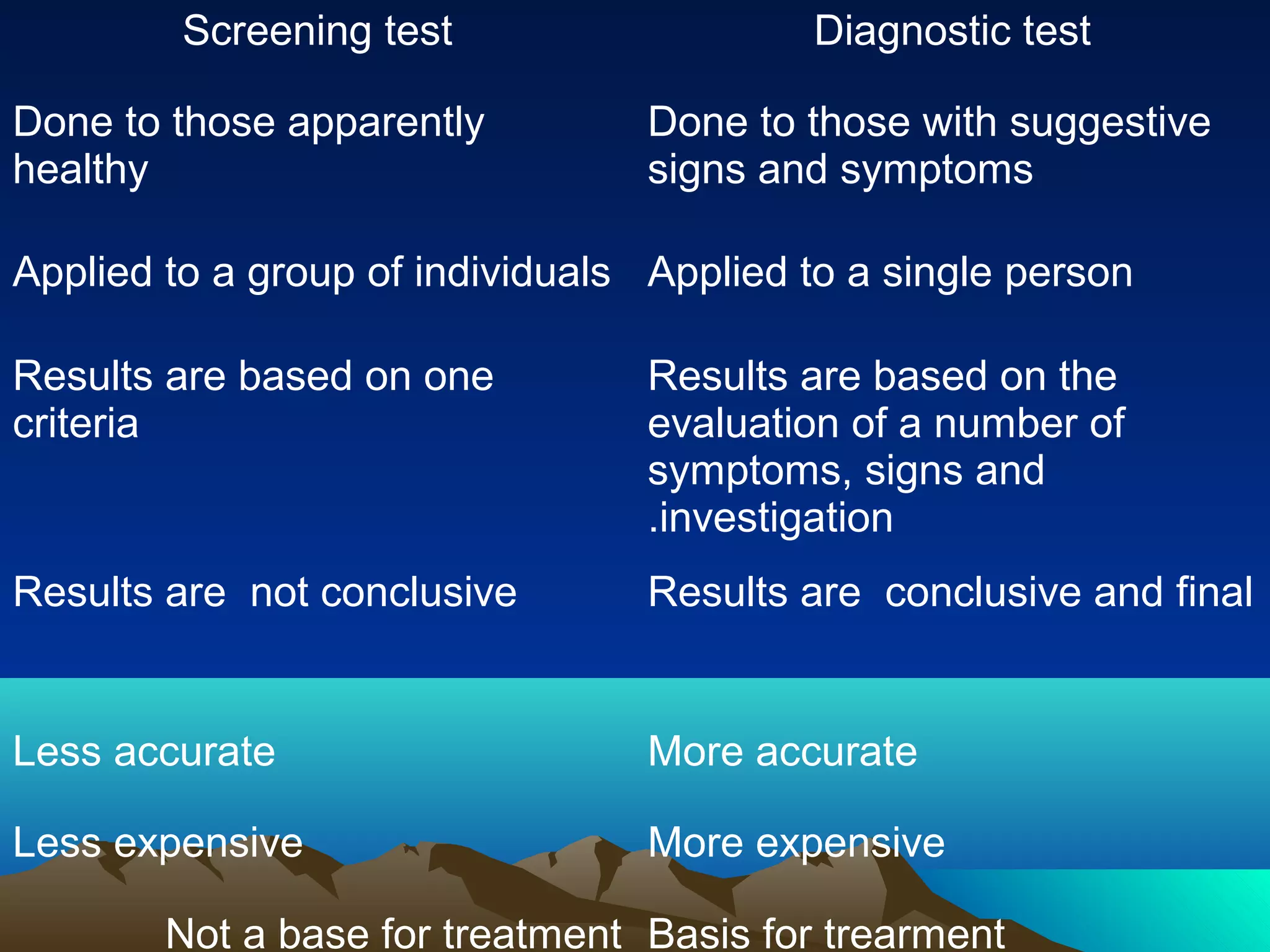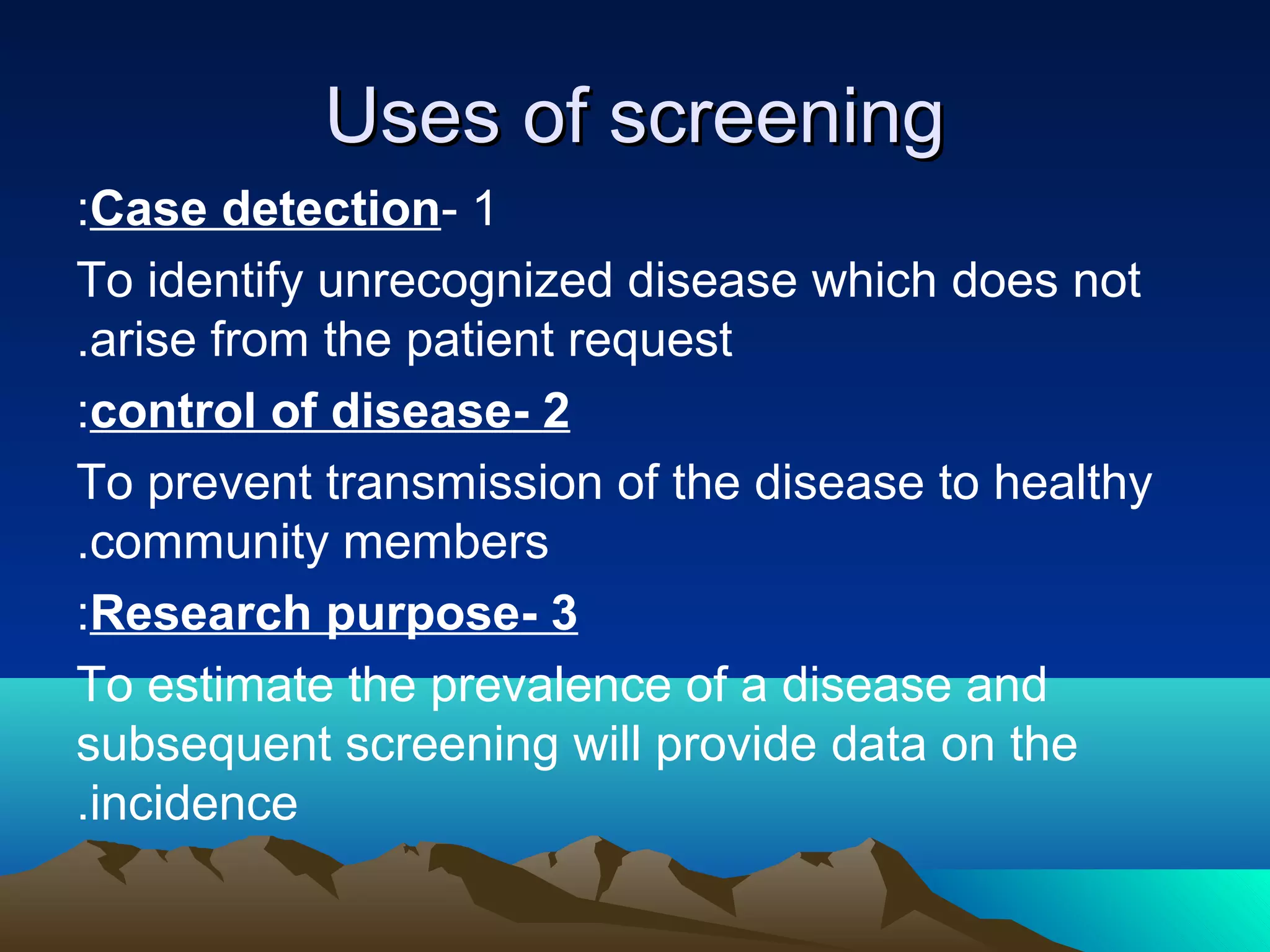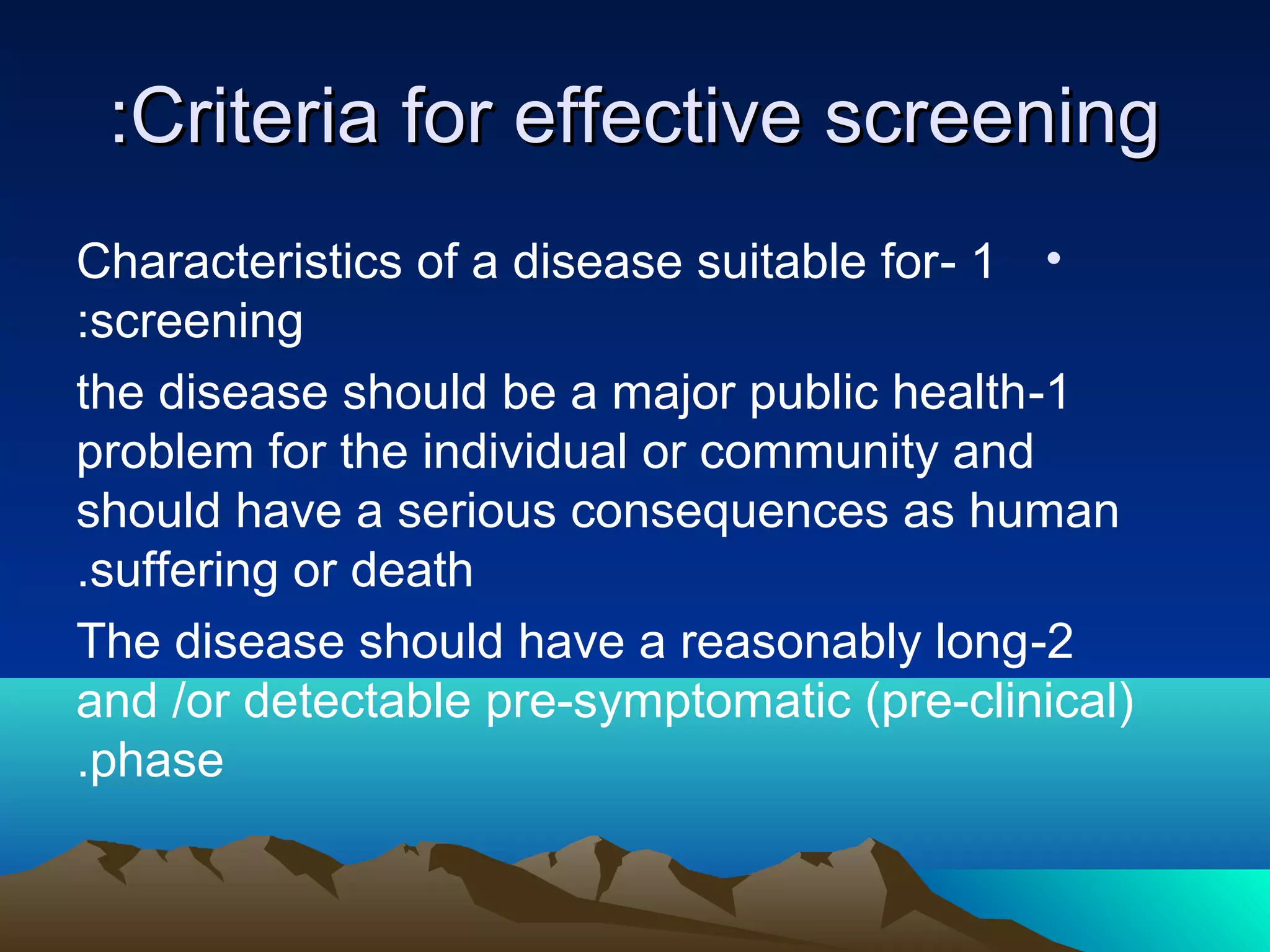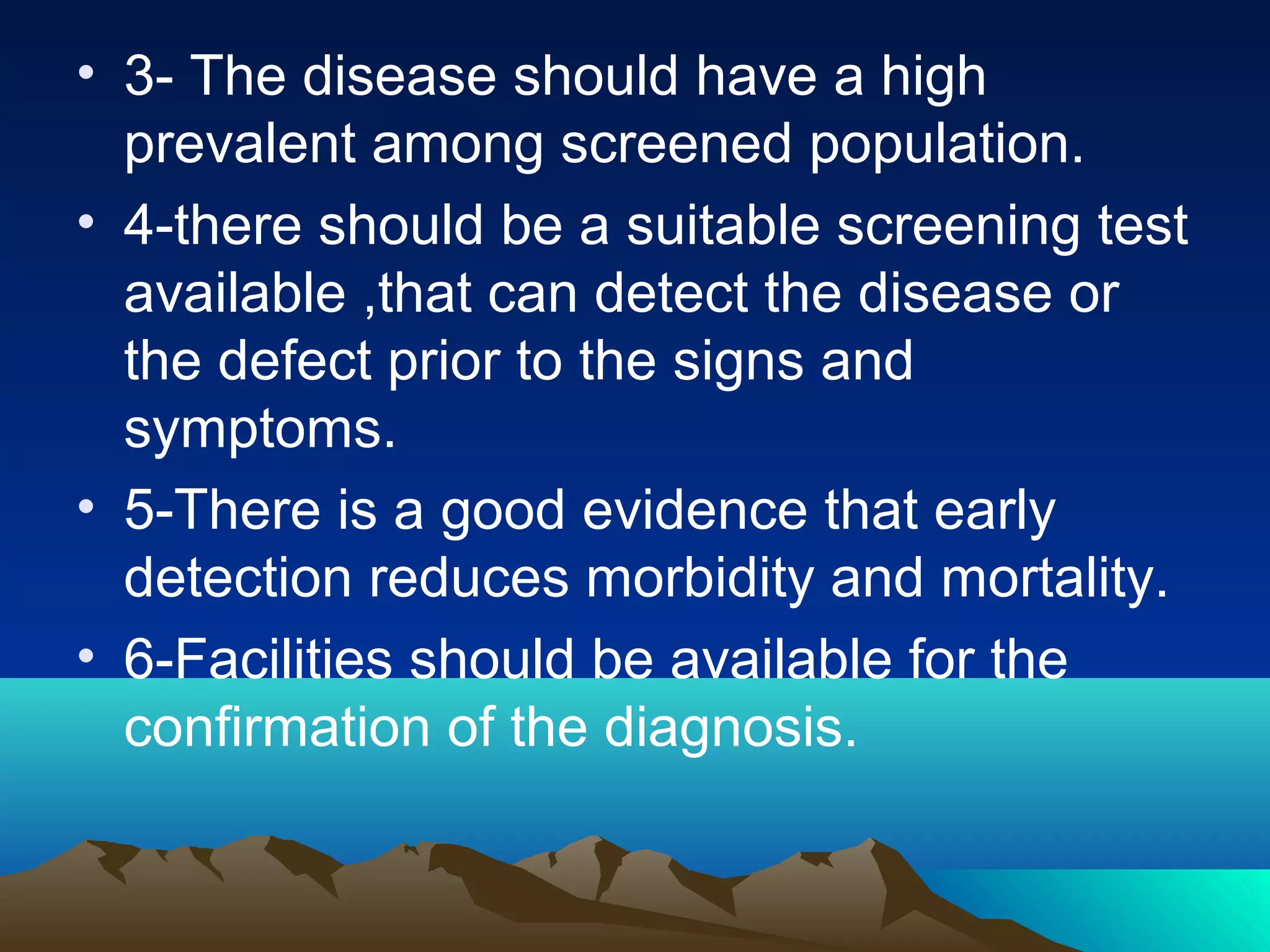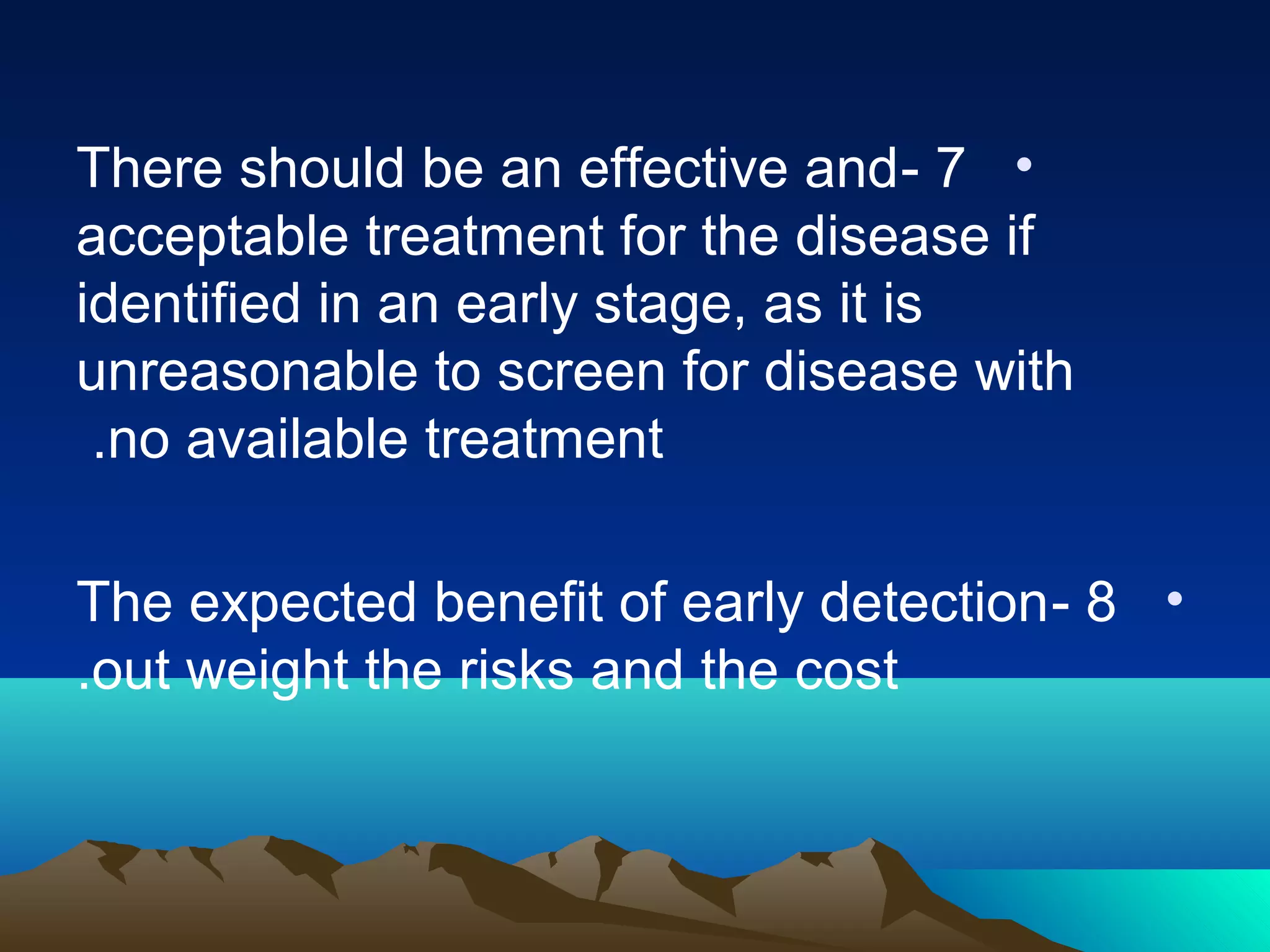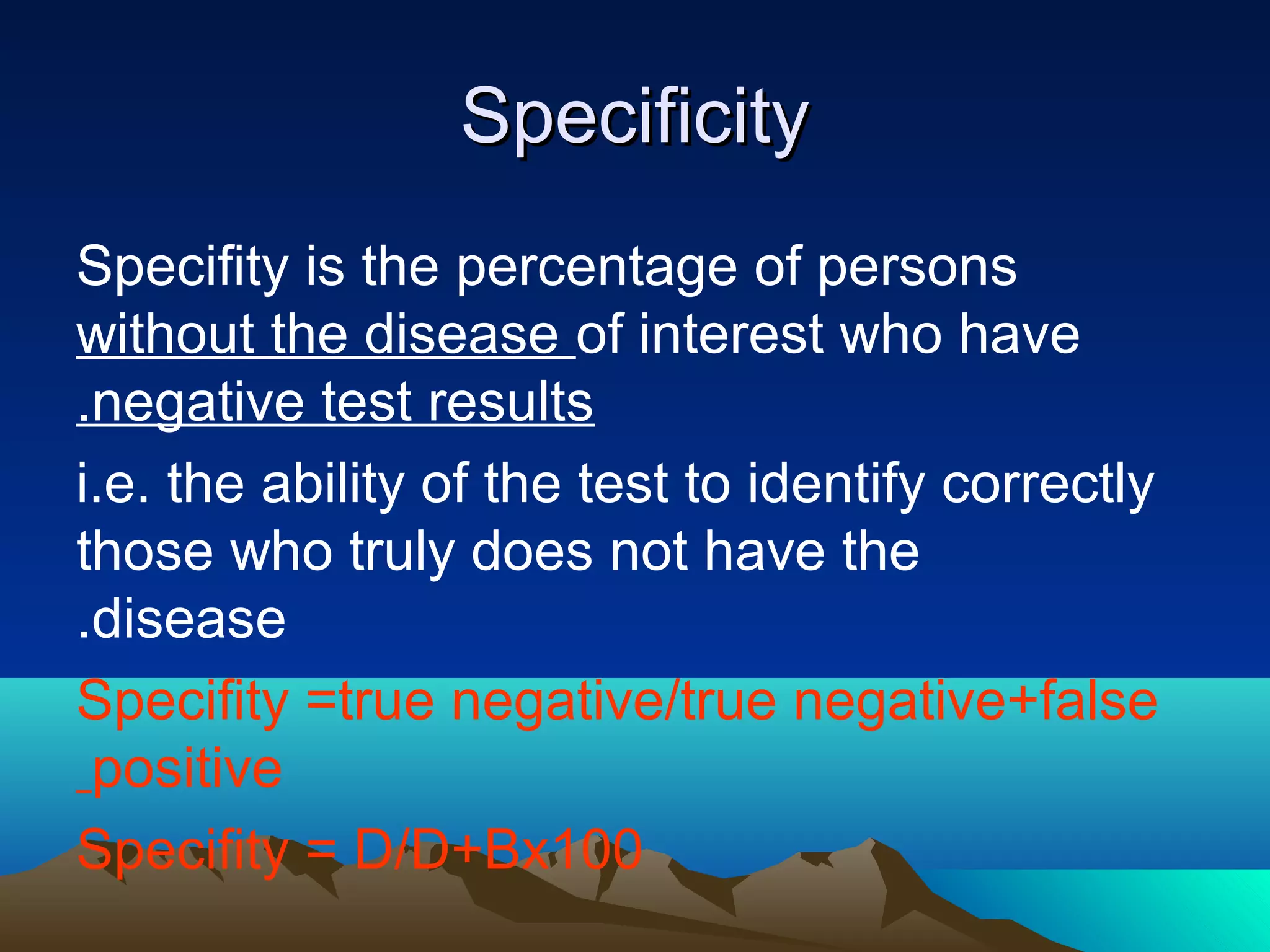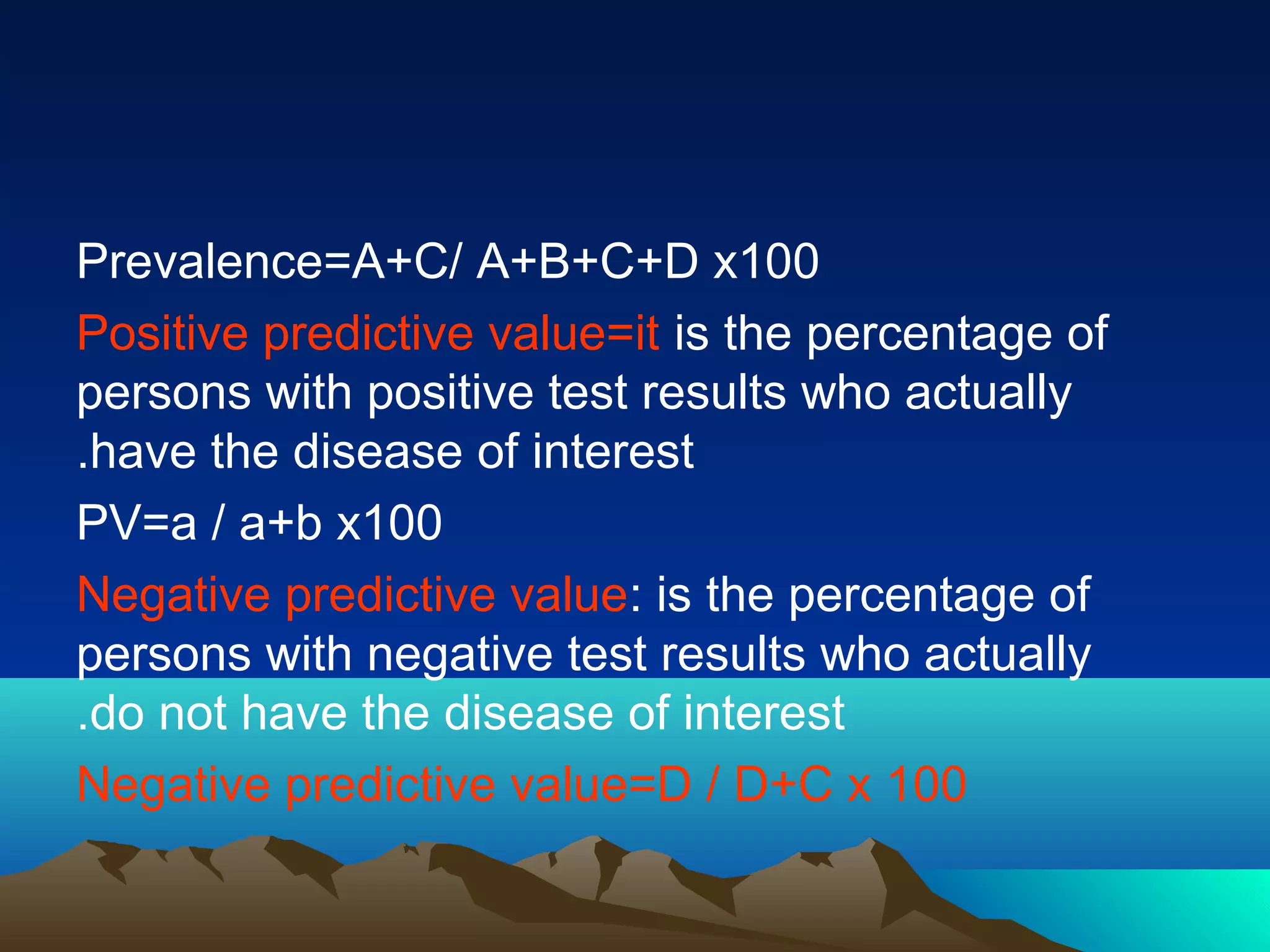This document discusses screening, including defining screening as applying tests to asymptomatic individuals to identify those at high risk of disease. It outlines objectives of screening like early disease detection. Characteristics of diseases suitable for screening include having a long pre-symptomatic phase and effective treatment existing. Screening tests should be reliable, acceptable, safe and low-cost. Sensitivity measures a test's ability to correctly identify those with disease, while specificity measures its ability to correctly identify those without disease. Screening criteria include the disease burden and test validity, reliability, costs and benefits.



